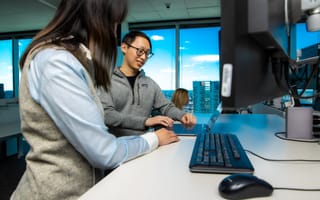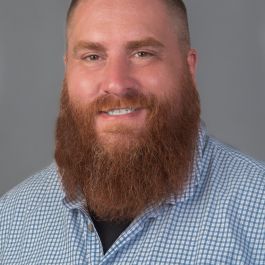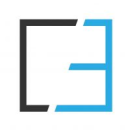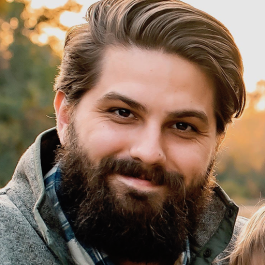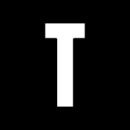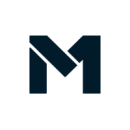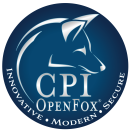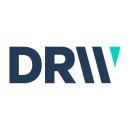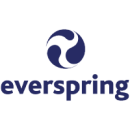
Having a passion project can be a creative and fulfilling enterprise. But it’s not often that project is anything more than a personal endeavor on your own time – and certainly not one that contributes to your professional career.
These seven tech leaders would beg to differ.
By having a diverse tech stack that satisfies specific team needs, engineers are approaching challenging projects with excitement in order to improve current company processes. Tackling these challenges from an innovative perspective also encourages team members to come together and let their unique capabilities shine.
Brad Beiermann, vice president of technology at Everspring, said his team is striving to achieve a narrower technology footprint while simultaneously launching new products in order to streamline their future methods.
Both Topstep and Vouch are transitioning from monolithic architecture methods to microservices in order to scale individual services for improved development. Supriya Kaledhonkar, senior engineering manager at Vouch, said she enjoys this process because it will allow a product to be deployed to market faster and more frequently.
Approaching challenges with a thoroughly tested tech stack keeps things interesting. They require deep knowledge that would be difficult to acquire outside of hands-on professional experience, said M1 Engineering Manager Chris Heikkinen. “As an engineer, being able to pursue a deep understanding of an interesting domain and to build modern software around it is an extremely fulfilling endeavor.”
Built In Chicago recently checked in with Beiermann, Kaledhonkar, Heikkinen and four other leaders across the city to learn more about the technology their teams are embracing to crush the projects that get them out of bed in the morning.
San Francisco-based insurance startup Vouch tailors business insurance and risk solutions for fellow startups and founders. The company has designed a digital platform to provide startups with specific insurance packages to help them mitigate risk.
Give us a bit of insight into your tech stack. What are some of your favorite tech tools your team is using?
At Vouch, we use a variety of technologies across our platform stack, especially to enable new services. Some of the technologies we use on the platform team include GraphQL, TypeScript, NodeJS, Ruby on Rails, and PostgreSQL for our services. We also have a couple of supporting technologies such as CircleCI, Docker, Datadog, LaunchDarkly, and a good portion of the AWS stack supporting our deployments.
Some of my favorite tech tools are GraphQL, LaunchDarkly, and TypeScript. GraphQL makes it easy for front end and back end to work independently and move fast. LaunchDarkly can help software delivery move quickly through usage of feature flagging; we’re able to avoid being blocked by regulatory or business complications and enable features as soon as business partners are ready to go. Finally, TypeScript types and interfaces make our development process faster, easier to read and debug code.
What’s the most interesting or challenging project you’re working on right now, and what do you enjoy most about it?
Vouch has many interesting engineering challenges, and one I’m personally finding enjoyable is our transition to microservices from a monolith. As we go through this transition, there are opportunities to work through each of the logical components, identify dependencies across the system, refactor existing code and refine/extend our data model. With the proliferation of services, the platform team is also spearheading the API gateway and interservice communication efforts. We’re excited about the transition to microservices because it’ll enable us to develop and deploy faster, allow higher reliability, ownership, and definition among engineers, and provide independent scaling based on need. Due to the smaller size of these services, we expect to deploy more often and faster, bringing improvements to market in a more incremental manner.
What’s something unique about your team from other engineering orgs you’ve been part of?
The best thing about Vouch is the cultural values every employee lives in their day-to-day work. Folks on our team are very honest and friendly and allow me to bring my whole self to work. Everyone is enthusiastic to welcome new employees and make every effort to make them comfortable. I felt this during my own onboarding, when the team provided all possible support I needed.
Vouch’s engineering team members are brilliant, highly motivated individuals and eager to learn and build the product with new technology. Vouch is invested in employee growth and provides great learning resources and training. I am honored to work with this motivated and intelligent team. Our cultural team plans Pride events, lunch and learns, team building activities and happy hours. We also have a dedicated diversity, equity and inclusion team that actively focuses on developing programs to support underrepresented communities and enable access to tech/fintech and insurance opportunities.
CityBase makes government and utilities easier for everyone. Their technology helps people find, apply, and pay for public services, and helps staff manage those interactions.
Give us a bit of insight into your tech stack. What are some of your favorite tech tools your team is using?
As a Rubyist, I am a fan of CityBase’s elegant combination of Ruby and Elixir. Syntactically, it makes switching between projects easier. We deploy our applications with one of my other favorite aspects of our stack: our Kubernetes and Argo implementation. Overall this combination makes deployments a breeze.
The tech stack allows me to think as both a functional and object-oriented programmer, depending on the situation. That helps me to identify solutions more easily.
What’s the most interesting or challenging project you’re working on right now, and what do you enjoy most about it?
We’re working on the scalability of our third-party client API implementations to make each implementation smoother, faster and more predictable – regardless of what combination of CityBase products a given client is using. I have been able to help architect a simpler onboarding process by designing internal tools that our solutions engineers can leverage. This is productizing the onboarding experience, making each implementation less reliant on custom development and freeing time for developers to focus on product roadmap and backlog projects.
What’s something unique about your team from other engineering orgs you’ve been part of?
One of the biggest differences is that we have operated as a remote team for the past year during the pandemic. During this time, our culture and camaraderie has remained resilient, and the team has encouraged pair programming opportunities, virtual social gatherings, and a strong desire to see each other face to face once it’s safe. We have some of the most amazing people on the engineering team and the company at large, who have made my entire time here wonderful over the last three years.
Trading platform Topstep enables aspiring traders of all skill levels to safely engage in and profit from financial markets by evaluating their performance in a real-time, simulated account.
Give us a bit of insight into your tech stack. What are some of your favorite tech tools your team is using?
Currently, we’re transitioning from a more traditional monolithic architecture to a microservice architecture, which will allow each service to run its own process. This transition also includes a shift away from Ruby on Rails and instead utilizing Node and TypeScript.
Rather than managing and provisioning servers, we’ll also be moving to an entirely managed and serverless AWS infrastructure. Our continuous integration/continuous delivery (CICD) is now done exclusively through GitHub Actions. Our entire backend is managed through a single repository, or monorepo, to minimize the tolls of context switching, making it easier for smaller teams to manage and share best practices and patterns.
What’s the most interesting or challenging project you’re working on right now, and what do you enjoy most about it?
Right now, we’re wrapping up a complete rewrite of our trade-processing system, which is the “heart and brain” of Topstep. Trade-processing is the procedure of going to our data providers and importing all of our trader’s trade data for the day. The exercise needs to be performed daily after the equity index futures markets close at 3:15 p.m. CST and must be completed before the market reopens at 5:00 p.m. CST.
We made a lot of interesting architecture and design decisions that will allow us to scale horizontally in the future, thus cutting our trade-processing time down from over an hour to just a few minutes.
What’s something unique about your team from other engineering orgs you’ve been part of?
There are organizations that I’ve worked for that shied away from “newer” technology choices. Topstep is NOT one of those organizations. We’ve never been afraid to try something new. Aside from that, in my opinion, we always try to keep technology best practices at the forefront of our minds, and we do our best to celebrate our accomplishments during weekly and monthly team meetings.
Something else that gets overlooked at a lot of organizations is a focus on the developer experience. Technical complexity can take its toll, so we try to keep the developer experience in mind with all of the new toolings we build or choose to implement. After all, a smooth developer experience means a more streamlined, effective and successful tech team!
Chicago-based M1 is a growing fintech company with an automated investing platform, allowing users to customize and automate their investments.
Give us a bit of insight into your tech stack. What are some of your favorite tech tools your team is using?
As an engineering organization, M1 adopts tools and practices that are what we believe to be the right balance of modern and exciting, yet practical and battle-tested. We use Scala and Akka with an emphasis on functional programming principles for building applications as well as practice Event Sourcing and CQRS. Our applications are containerized and deployed to Kubernetes, which run in the AWS cloud. Our primary tool of choice when it comes to data and persistence is Postgres.
What’s the most interesting or challenging project you’re working on right now, and what do you enjoy most about it?
It is difficult to just name one initiative or project; at M1, we have an opportunity to modernize many aspects of the financial industry that have largely remained unchanged for decades. Our mission is to rethink how these systems operate from first principles and rebuild them into modern solutions that are more widely accessible. As we continue to grow, we are taking on many new initiatives to add products and features to our platform that will continue to simplify wealth management for our users.
Generally speaking, these projects are interesting because they require deep knowledge that would be difficult to acquire outside of hands-on professional experience. They are challenging due to the complexity that comes with handling money in the financial industry. As an engineer, being able to pursue a deep understanding of an interesting domain and to build modern software around it is an extremely fulfilling endeavor.
What’s something unique about your team from other engineering orgs you’ve been part of?
Ownership mentality: All team members are able to take ownership of projects and are given the autonomy to execute on them. If you see an opportunity for improvement, we empower you to run with it. If you want to take on more responsibility, we give you the opportunity.
Egoless culture: As a team, we want to move forward with a solution because it is the best choice, not because it was mandated to be done a certain way.
Team-oriented problem solving: When a team member runs into a hard problem, the rest of the team is there to bounce ideas around, brainstorm together and assist in getting to a solution. We value ideas and collaboration from all of our team members.
Monthly team demo days: At least once a month, we get together as an organization for a demo day to showcase exciting features that our teams have been working on as well as new technologies or patterns that can be leveraged across the organization.
CPI, the OpenFox Company is a privately-held corporation that develops software allowing law enforcement entities to share data quickly and do their jobs more efficiently.
Give us a bit of insight into your tech stack. What are some of your favorite tech tools your team is using?
From the top-down, we leverage Angular and Bootstrap, written in TypeScript and SCSS for our web platform. For the OpenFox desktop client, we leverage Java and Swing. One layer below the web client, the data services team uses Java alongside Spring and Hibernate to build their middle-tier solutions. Below that would be the Switch, which is written in C/C++. At the bottom, we have the databases, which are RDBMS repositories, such as SQL/Oracle.
My personal favorite tool we use will probably have to go to JetBrains’ IntelliJ IDEA. It integrates with everything we leverage, between the TypeScript code help, SCSS/HTML insights and Maven/NPM integration – not to mention the numerous plugins to further integrate with our workflow. It’s an invaluable tool for daily development work.
What’s the most interesting or challenging project you’re working on right now, and what do you enjoy most about it?
Building an enterprise-level, scalable web application framework leveraging Angular. Until now, I had no formal experience writing TypeScript. I’ve worked with JavaScript before writing for another framework, but between the design differences and the language nuances, this project has proven to be a challenging yet exciting one. The thing I personally love most about it is the culmination of the loosely-typed nature of JavaScript combined with the pre-transpired type-safety that TypeScript provides, along with the policy of configuration being the driving factor of the components we create. It allows us to write relatively small amounts of code compared to what can be created using the configurations we’ve designed.
What’s something unique about your team from other engineering orgs you’ve been part of?
Hopefully we’ll be able to continue this one soon, but before the local restaurants closed we’d all go out for a team lunch on Fridays. There’s also the recreational room’s arcade and Nintendo Switch, where we’d play a few rounds of Super Smash Bros. I feel being able to spend time more casually builds rapport and camaraderie between the team members, which is very helpful for morale and unity within the team.
DRW is a diversified trading firm that uses advanced technology to identify and capture trading and investment opportunities globally. Cumberland is the cryptoasset arm of DRW. It provides the access that financial institutions and high net worth individuals need to capitalize on opportunities in the cryptoasset space, while working to ensure that the ecosystem continues to grow and evolve in a responsible, sustainable way.
Give us a bit of insight into your tech stack. What are some of your favorite tech tools your team is using?
We focus primarily on Java and C++, leveraging their well-understood ecosystems and massive community support, but with a heavy emphasis on type-safe, pure functional programming. Cumberland DRW manages to solve stateful, side-effecting code with foundational solutions that encapsulate their inherent complexity while allowing full expression at the type level. Code that is considered inextricably coupled to side effects is represented as a series of pure function compositions, allowing maximal testability and determinism without demanding any specific effect.
As an example, logging – which is historically considered peripheral – is an essential and explicitly tested capability in our code. To help facilitate this style, we use language features like C++20 Concepts, and open source contributions such as [lambda] and [Shōki], which enable our application of abstract and constructive mathematics to software development.
What’s the most interesting or challenging project you’re working on right now, and what do you enjoy most about it?
The problem domains associated with trading desks are intricate: order management and execution, market data aggregation and dissemination, and real-time risking and reconciliation are just a few of the complex systems involved. As a cryptocurrency desk, we have the additional nuances of a rapidly evolving financial sector that, unlike traditional algorithmic trading, is 24/7. Writing highly available software that is responsive to a wide variety of market conditions and a dynamic regulatory landscape demands rigorous modeling both in terms of correctness and asymptotic behavior. These challenges drive us to constantly invest in our tools and processes, providing the chance to revisit previous solutions with a fresh perspective.
What’s something unique about your team from other engineering orgs you’ve been part of?
I’ve worked with a lot of exceptional engineers throughout my career, but the Cumberland team is one of the most well-balanced and talented teams I have ever worked with. In “The Passionate Programmer,” Chad Fowler encourages finding a band where you can be the worst player because it gives you a platform to grow, and I’ve always looked for that opportunity. It’s something everyone on the Cumberland engineering team can experience given the variety of skills and expertise.
The ability to pair and learn something new every day is what drove me to Cumberland and plays a major part in my continued happiness here. I also value the rare opportunity as an engineer to have my work inextricably tied to outcomes and to be able to consistently quantify its impact. This facilitates a pursuit of rigor, testing and determinism as core principles for the team. It’s refreshing to have internal consistency on how our approach to software development and delivery drives results and allows us to be good partners to the trading desk.
EdTech company Everspring partners with traditional universities and educational institutions to build high-quality online learning programs.
Give us a bit of insight into your tech stack. What are some of your favorite tech tools your team is using?
We are an edtech shop that supports a very broad array of business offerings that includes SaaS products, e-commerce, and online micro-sites to name just a few. That also means we have a broad technology portfolio stack. Our stack is built upon a polyglottic array of languages and frameworks. We are using scripting languages such as Java, Scala, PHP, and Python languages along with frameworks such as Spring Boot and Slim.
Our front-end technologies include React, Angular, and some Embers. We are cloud native on AWS, leveraging a containerized environment along with AWS Lambda. Our data side is using MongoDB to capture prospect leads and Redshift for handling the analytics data behind it.
One of the things I have set in motion is getting a narrower technology footprint; specifically, establishing a technology-paved road that begins to reduce the technology sprawl. We have many tools being used at any given moment. It adds up in terms of cost and complexity. We have an opportunity to drive lean IT by leveraging ecosystem-based tools. One of my favorite tools we started using this past year has been Monday.com for project management.
What’s the most interesting or challenging project you’re working on right now, and what do you enjoy most about it?
We have several exciting projects happening this year, but the one that comes to mind is the implementation of Parameter Store. This is an AWS product we have architecturally embraced and created a future state around. The prospect of us getting our technology environment into a tighter integration footprint while maintaining separation of concerns (SoC) is a design/implementation goal for us.
As a first step, Parameter Store brings opportunities for us to configure change notifications and fire-off automated actions for parameters and parameter policies. It allows us to tag parameters for specific environments, groups, users, or whatever periods we choose. In short, we will end up with a nicely structured hierarchical storage for configuration data management. The bonus here is enhanced security across multiple facets in our technology assets. It’s an exciting project that will help us scale with fewer headaches.
What’s something unique about your team from other engineering orgs you’ve been part of?
We have some business challenges that bring out unique talents on our team. Having a broad array of business technologies is often common at a larger company supported by a large-sized team. In our case, we are a smaller company with a tech team taking on many things. This often means our developers and technologists have to switch context frequently. Our team gets full exposure to technologies in our stack as the work can greatly vary week to week.
As an example, one day you can be working on an interesting JavaScript solution and deployment; the following day, you can find yourself working with Shopify; the following day after that it might be something with Redshift, or a content management system. What is impressive with our team is the ability for folks to switch problem-solving context in those movements. It’s a great environment for personal growth and building on technical chops. Our team has a lot of fun.

